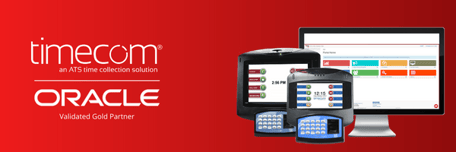Absenteeism can be very costly to your company. That’s why you implemented Oracle Cloud to improve your workforce management practices.
5 Types of Employee Attendance Standards
To help you create an employee attendance guideline, we have some examples for you to consider.
The Discipline Process Standard
 In this policy standard, a disciplinary process can begin as soon as an employee exhibits high absenteeism.
In this policy standard, a disciplinary process can begin as soon as an employee exhibits high absenteeism.
These abuses can include an excessive number of absences, unscheduled absences, or unexcused absences.
A good tactic when noticing high absences is to begin the conversation with the employee in a constructive way so you can get to the bottom of why they’re frequently absent. That’s the most effective way to devise a plan for them to improve their attendance.
The Incentive Process Standard
Instead of focusing on discipline, an incentive standard rewards employees for excellent or good attendance. Motivating positive behaviors improves employee culture and attendance.
A single employee attendance policy can include both disciplinary and incentive standards.
An Undefined or Discretionary Standard
Tell employees they must be at work as scheduled. Managers can decide what constitutes too many absences and what kind of discipline is suitable.
Using a discretionary standard may create a sense of unfairness among employees  due to the subjective standards to manage employee attendance. If one manager or department operates under far more permissive attendance standards, it could undermine attendance throughout the company.
due to the subjective standards to manage employee attendance. If one manager or department operates under far more permissive attendance standards, it could undermine attendance throughout the company.
You may be able to avoid problems if you clearly communicate the reasons why managers have discretion. Some employees who are exempt from hourly pay may have more flexibility in their attendance policy, which may include remote work opportunities.
A Relative Standard
With a relative standard managers rank their employees based on their attendance record from best to worst. Employees who are at the bottom of the list could be subject to counseling or other disciplinary actions.
The challenge with using a relative standard is that an employee with the best attendance record on the team might still have a poor attendance record based on company standards. A team with poor overall attendance reveals a team leadership problem.
A company that allows the relative standard can address this by assessing team leader performance in attendance the same way. Senior management can recognize leaders of teams with higher attendance. While team leaders whose teams have poor performance records negatively impact that leader’s performance review.
With this approach, the relative standard still incentivizes leaders at every level to improve employee attendance on a broad basis.
A Points System
Employees get demerit points for every absence and/or tardiness. When the employee reaches a predetermined number of points, managers can take disciplinary actions. At the first stage, the manager might just counsel the employee. The more points an employee accumulates, the stiffer the penalty, including possible termination.

Absences can “earn” more points than a tardy. You may choose to raise the points for each absence or tardiness when multiple incidents occur together.
Managing Attendance Data
In addition to selecting an attendance standard, you must also set clear standards for identifying absences and tardies.
Having a time clock – Oracle integration is the best way to automate collection of attendance data. The time clock collects precise work hours with every punch and sends that data to Oracle. Managers can gain insight into all real time attendance data they need to enforce the attendance standard.
Addressing Absenteeism with Your Oracle Integration Time Clocks
Your time clocks must work seamlessly with your Oracle environment exposing you to all kinds of employee data like, punch in time, punch out, meal break, what clock they used and so much more.
Since you’re taking the necessary steps to address employee absences, you first must establish attendance standards for your company.

Setting the Standard
There isn’t a single approach that will work for every company. Choose an employee attendance tracking application integration standard that balances flexibility and fairness to match your company culture.
Outline the complete employee attendance policy in detail in the employee handbook, so everyone is on notice. It might even be a good idea to note in the handbook why you selected your oracle integration cloud over mobile applications.
Check out a few other resources to help prevent absenteeism from costing your company money. And get in touch with our solution consultant today for all your time clock needs.
While ATS is passionate about time and attendance and excited to support organizations navigate workforce dynamics around timekeeping and employee time clocks, we recommend you reach out to your regional and/or local HR chapter for more information on common workplace advice and procedures.






